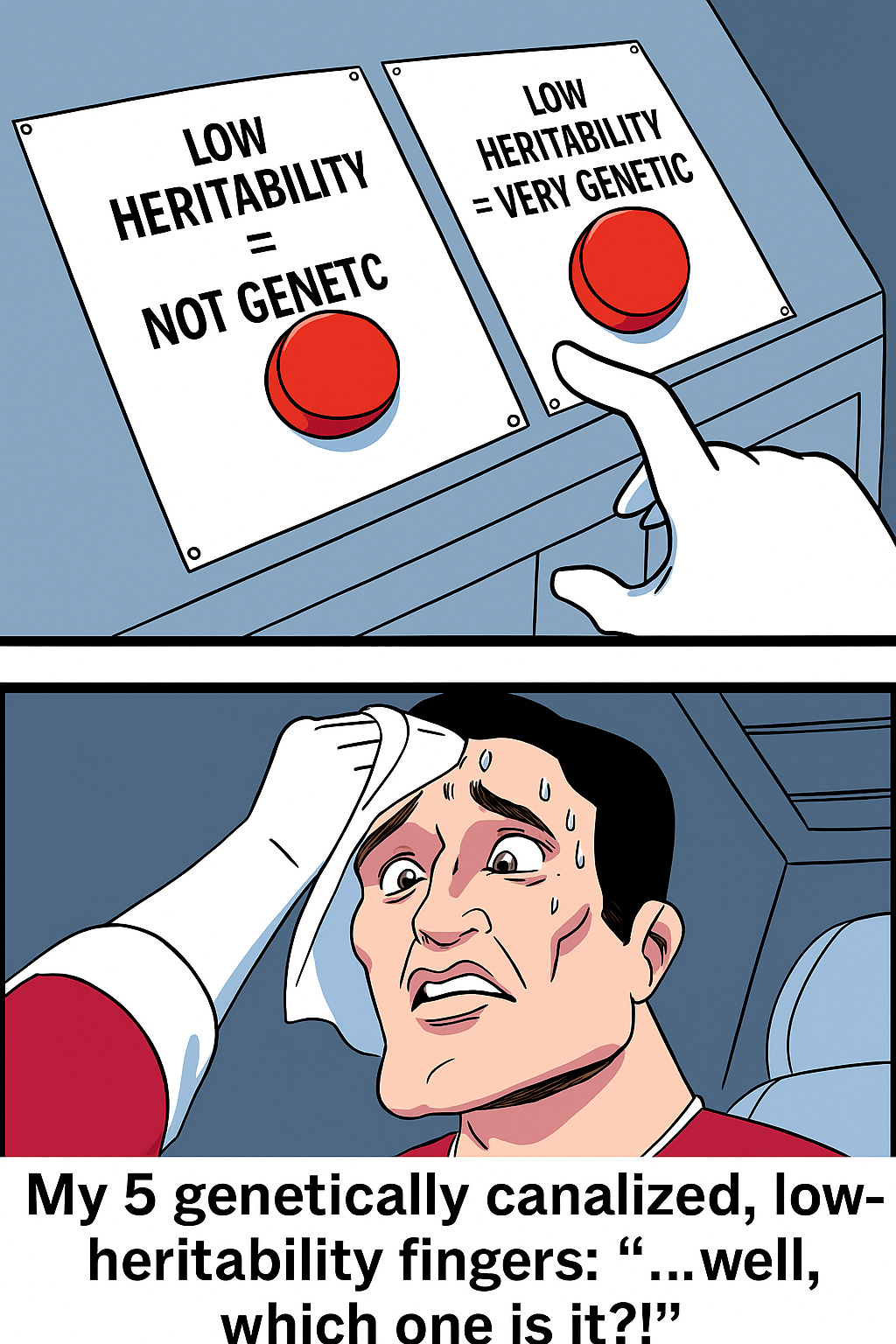When Low Heritability Means Different Things: Number of Children vs. Number of Fingers
Implications for the nature vs nurture debate and the portability of polygenic scores
When we hear a trait has “low heritability,” it’s easy to assume it means “not genetic.” But heritability is a slippery concept: it doesn't measure how genetic a trait is, but how much of the variation in a trait, within a specific population, can be explained by genetic differences. Two starkly different examples show why this matters: the number of fingers people have, and the number of children they have.
Both appear to have low heritability on the surface, but they arrive at that point for completely opposite reasons. One is a story of genetic rigidity; the other, of genetic flexibility.


